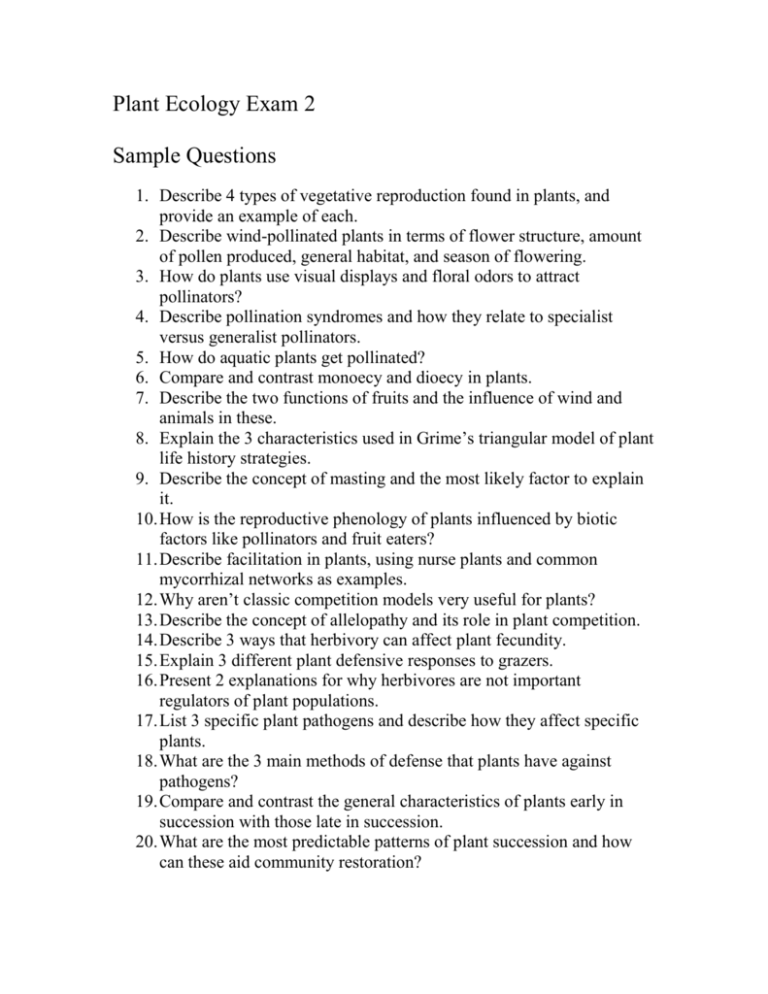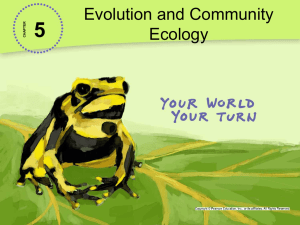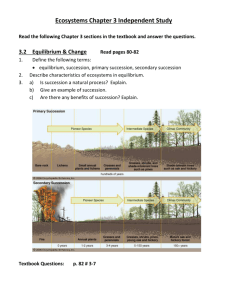Plant Ecology Exam 1
advertisement

Plant Ecology Exam 2 Sample Questions 1. Describe 4 types of vegetative reproduction found in plants, and provide an example of each. 2. Describe wind-pollinated plants in terms of flower structure, amount of pollen produced, general habitat, and season of flowering. 3. How do plants use visual displays and floral odors to attract pollinators? 4. Describe pollination syndromes and how they relate to specialist versus generalist pollinators. 5. How do aquatic plants get pollinated? 6. Compare and contrast monoecy and dioecy in plants. 7. Describe the two functions of fruits and the influence of wind and animals in these. 8. Explain the 3 characteristics used in Grime’s triangular model of plant life history strategies. 9. Describe the concept of masting and the most likely factor to explain it. 10. How is the reproductive phenology of plants influenced by biotic factors like pollinators and fruit eaters? 11. Describe facilitation in plants, using nurse plants and common mycorrhizal networks as examples. 12. Why aren’t classic competition models very useful for plants? 13. Describe the concept of allelopathy and its role in plant competition. 14. Describe 3 ways that herbivory can affect plant fecundity. 15. Explain 3 different plant defensive responses to grazers. 16. Present 2 explanations for why herbivores are not important regulators of plant populations. 17. List 3 specific plant pathogens and describe how they affect specific plants. 18. What are the 3 main methods of defense that plants have against pathogens? 19. Compare and contrast the general characteristics of plants early in succession with those late in succession. 20. What are the most predictable patterns of plant succession and how can these aid community restoration? 21. Explain why common plants may become common, and why rare plants may be rare. 22. What characteristics may make a plant potentially invasive, and approximately what proportion of introduced plants might become invasive? 23. Describe the intermediate disturbance hypothesis as it relates to species diversity/richness. Do scientific studies support or refute it?











